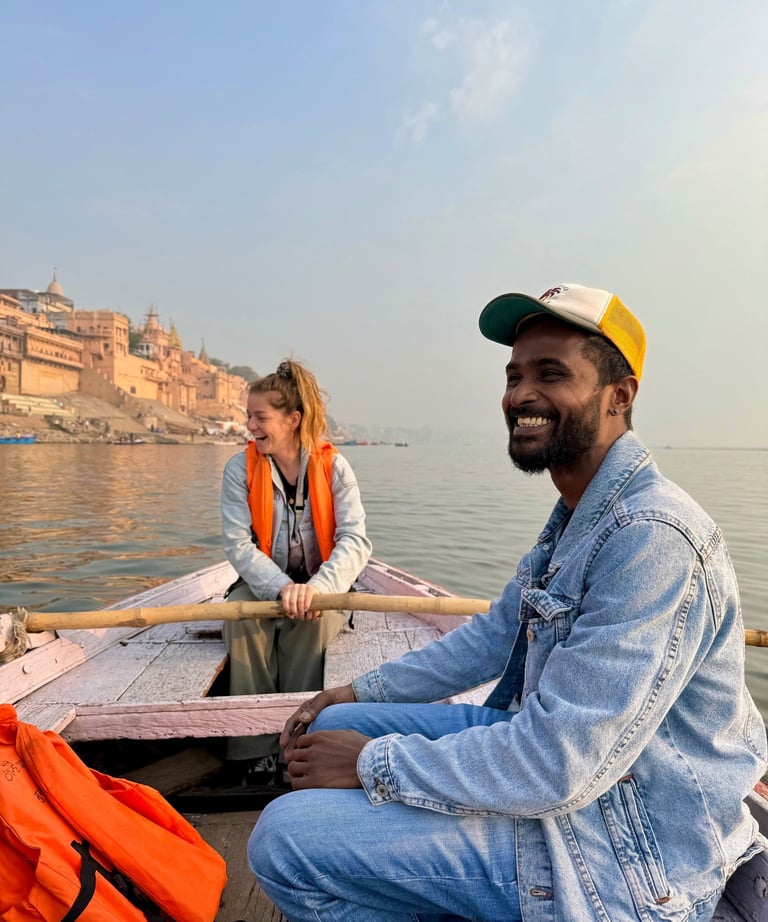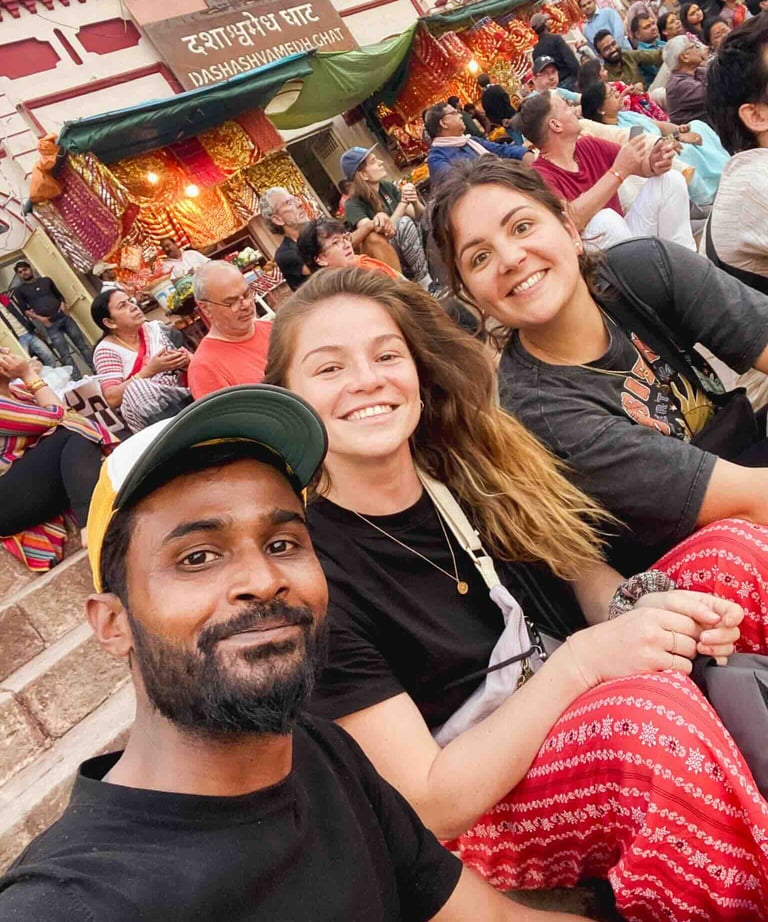VARANASI TRAVEL GUIDE: Explore the Sacred City
Varanasi Travel Guide: Discover the sacred city of the Ganges, cradle of Hindu spirituality. Immerse in its ancient history and authentic Indian culture.
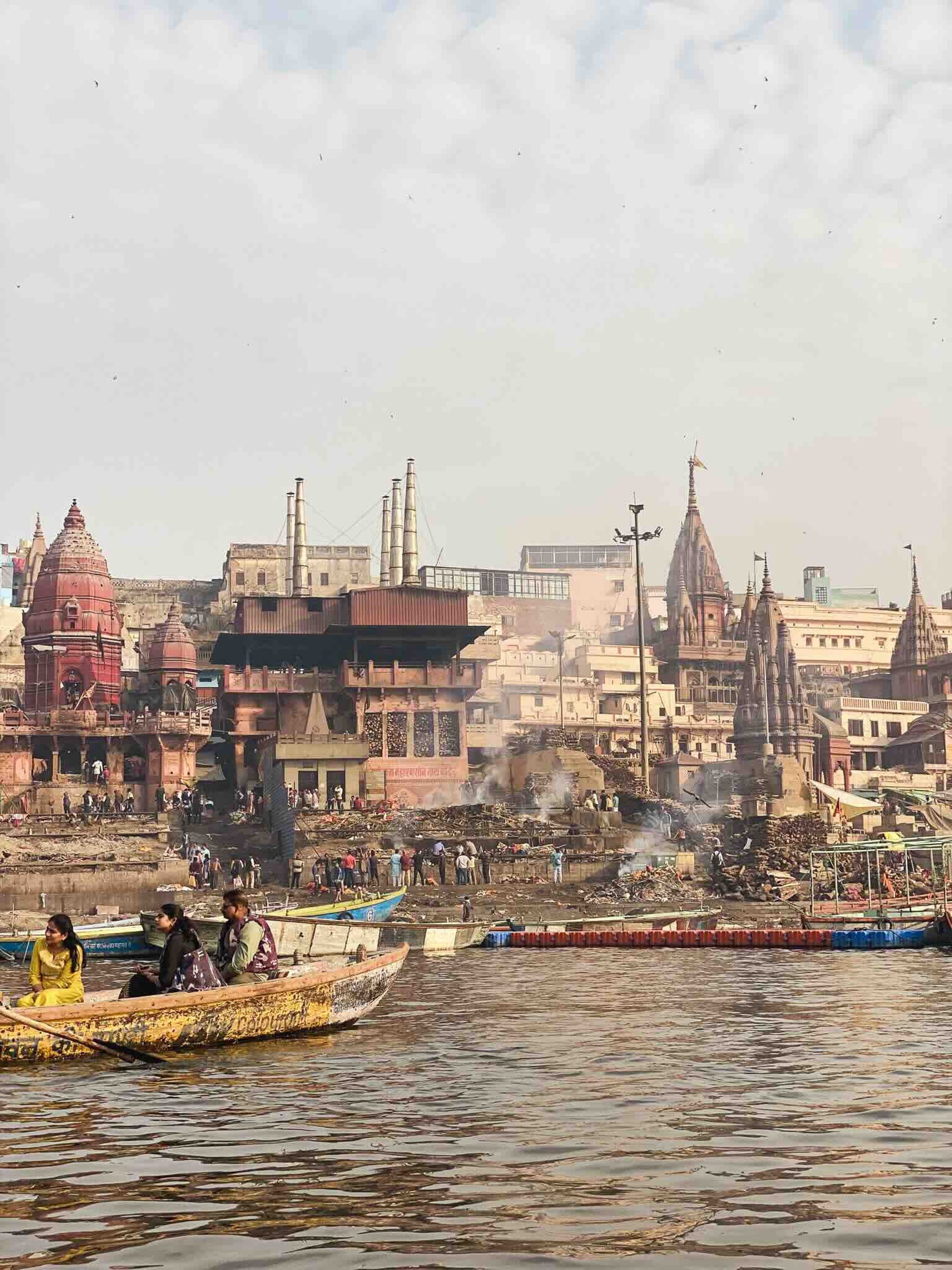
Varanasi: Explore the Sacred City
with Our Practical Guide
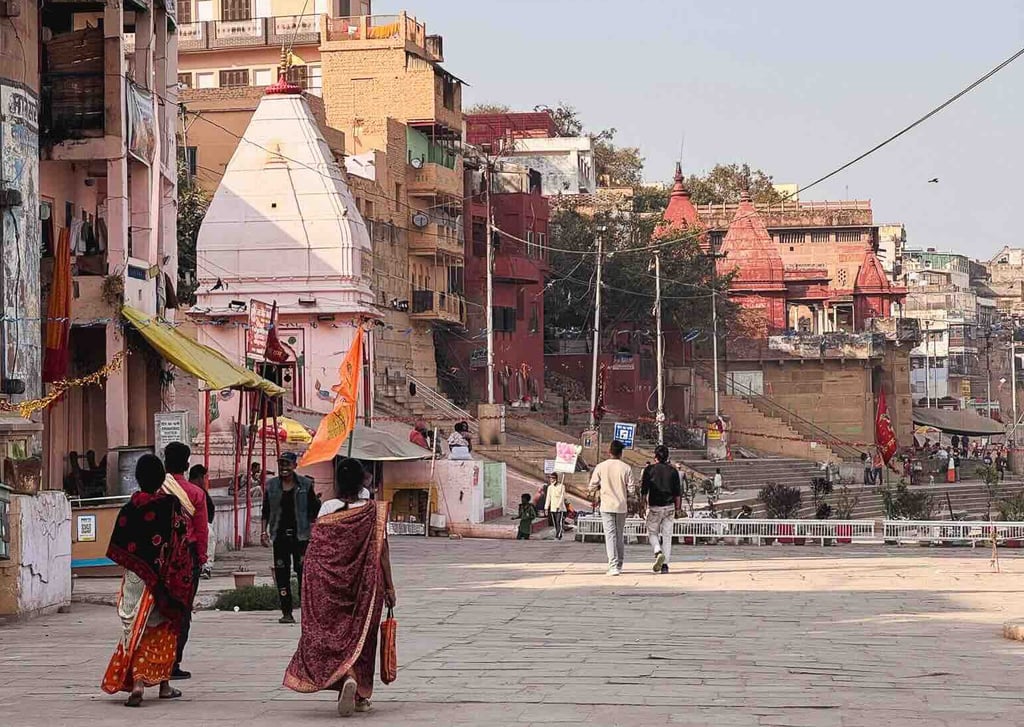

When to Visit Varanasi?
The best time to visit Varanasi is from November to March, during the winter season. During these months, temperatures are mild and pleasant, avoiding the extreme heat of summer.
How to Get to Varanasi?
You can fly directly to Varanasi from France, but a more common option is to take a flight from Delhi, which lasts about 1.5 hours and costs around 100 euros. However, for a more authentic and immersive experience, we recommend taking an overnight train. We paid around 17 euros for a 10-hour journey in a sleeper train with three-tier bunks and air conditioning.
How Long to Stay in Varanasi?
Exploring Varanasi is an intense experience, both culturally and emotionally. While the city is full of treasures to discover, 3 to 4 days are generally enough to grasp its essence. Due to its emotional impact, it’s important to plan moments of rest and reflection to fully appreciate and process this unique experience.
Should You Hire a Guide?
Varanasi was the only city in India where we felt the need to hire a guide. Its history, culture, and unique atmosphere can be overwhelming, and we wanted to truly understand what we were experiencing. While browsing Facebook groups for recommendations, we came across Manish, a local guide who speaks perfect French and English. The idea of being able to ask all our questions and have deep discussions without a language barrier immediately won us over.
And we couldn’t have hoped for a better encounter. Manish planned our day perfectly, allowing us to enjoy the sunrise over the Ganges while also scheduling quiet moments to eat, relax, and truly take in the city. His kindness and attentiveness left a lasting impression on us. He took the time to explain everything and led us to some of the city’s most fascinating hidden spots. We had a wonderful time with him and left with more than just a tour— we gained a new friend.
You can contact him on Facebook via his page "Connexion Bénarès" or directly on WhatsApp. Say hello from us—he’ll be delighted!
What to Do in Varanasi?
1 – Attend Ceremonies
In Varanasi, life revolves around the ghats—wide stone steps lining the Ganges that serve as places of prayer, cremation, bathing, and gathering. They are the spiritual and social heart of the city, where every moment of the day is marked by rituals and encounters.
The most famous ceremonies take place at two main ghats: Dashashwamedh Ghat and Assi Ghat. The first is renowned for its evening Aarti, a mesmerizing ceremony honoring the Ganges, while Assi Ghat is known for its morning Aarti, a more intimate but equally powerful ritual.
During these ceremonies, young pandits (Hindu religious scholars) perform a precise choreography with oil lamps, sacred fires, flowers, and incense, synchronized with chants and prayers. The atmosphere is hypnotic, filled with spiritual devotion that transcends centuries.
Thanks to our guide, we had the privilege of sitting front row at the evening ceremony on Dashashwamedh Ghat. That night, we were the only tourists, fully immersed among the devotees in a timeless moment. A suspended instant where you feel both like an observer and an integral part of this ancient ritual.
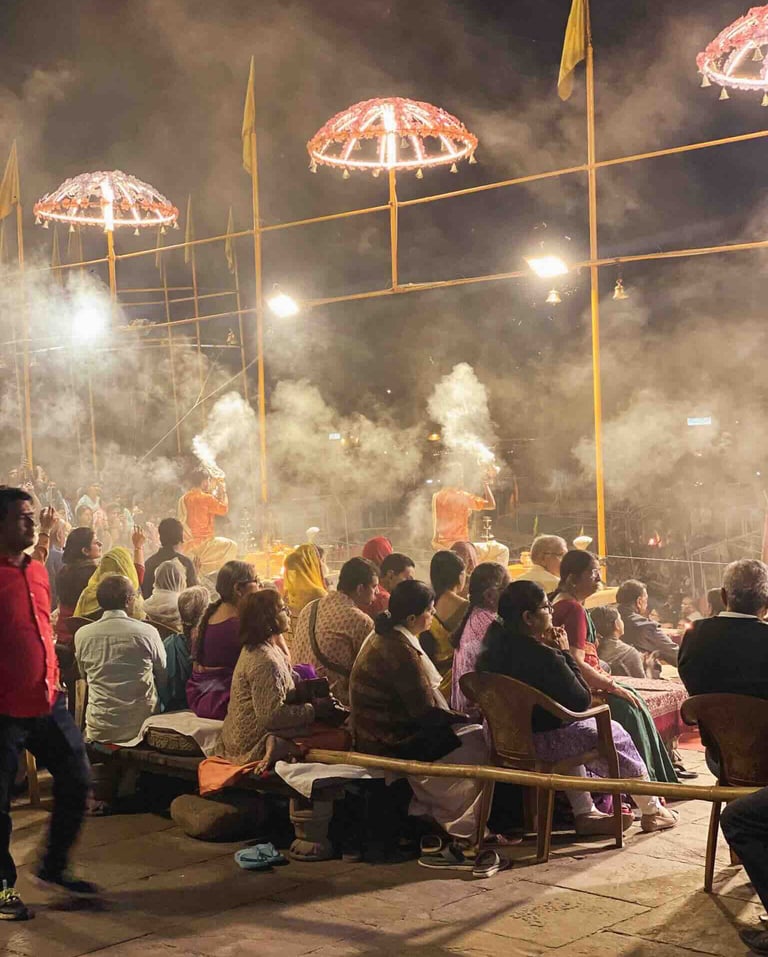

2 – Getting Lost in the Alleys of Varanasi
Walking through Varanasi’s old city feels like stepping into another world. The narrow, labyrinthine alleys, lined with ancient houses and hidden temples under archways, give the impression that time has stood still. Every turn holds a surprise—an improvised shrine, a cow peacefully settled in the middle of the path, or a skilled artisan at work.
With our guide Manish, we had the opportunity to witness a religious ceremony—a deeply moving moment that helped us better understand the ever-present spirituality of the city. In Varanasi, even the most mundane gestures seem infused with sacred meaning.
As we wandered, we also encountered another striking aspect of the city. Several times, we saw stretchers carried by men chanting a prayer in unison. On these stretchers lay bodies wrapped in cloth, adorned with flowers and colorful powders, making their way to the cremation ghats for their final rites before being offered to the Ganges. A surprising, almost surreal sight, but one that is deeply woven into the fabric of life here.
Varanasi is also known for its exquisite craftsmanship, particularly its finely embroidered silk fabrics and saris. It’s impossible to resist stepping into a small shop to admire the meticulous work of artisans. And, of course, no visit is complete without stopping at a chai shop to savor a steaming cup of masala chai.
Finally, while exploring the ghats, we stumbled upon one dedicated to couples seeking a blessing for children. In Varanasi, faith is lived daily, creating a unique atmosphere—a blend of devotion and the gentle rhythm of life.
4 – Watching the Sunrise from the Ganges
Experiencing a sunrise from the Ganges is a magical moment in Varanasi. Glide across the sacred waters aboard a traditional wooden boat for an authentic and respectful encounter with this holy place. You will witness an incredible spectacle: Indians from all over the country gathering to bathe in the Ganges, hoping to attain a better life. On the ghats, both locals and tourists practice yoga at dawn, while babas—Hindu ascetics devoted to spirituality—meditate deeply. Meanwhile, some bodies are being cremated according to Hindu funeral rites, allowing their souls to be set free.
We absolutely loved this experience! Observing these diverse scenes in silence while watching the sunrise paint the sky with stunning colors was simply magical.
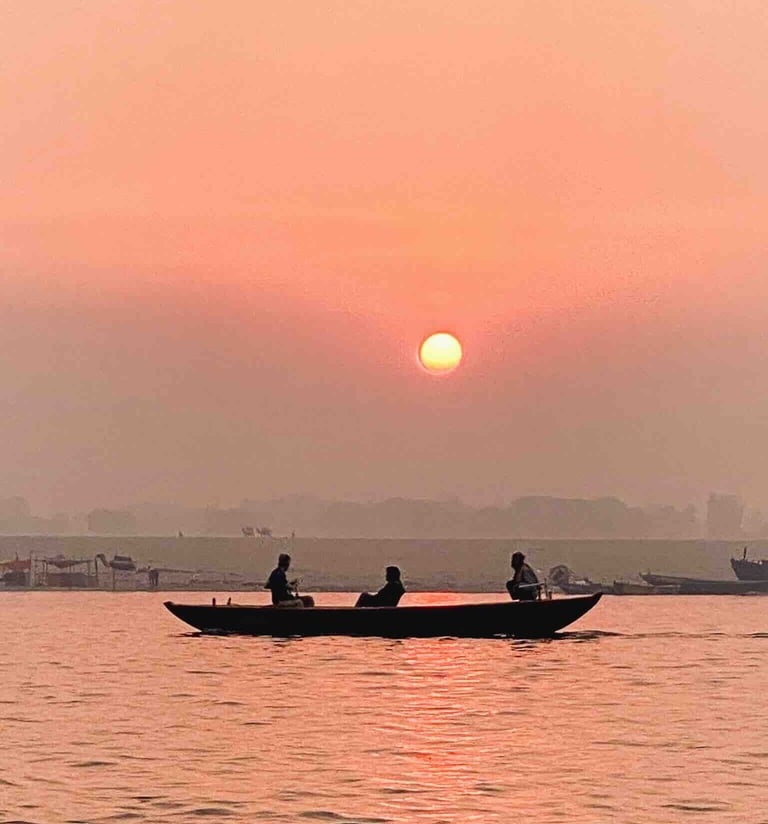

5 – Witnessing Cremations at Manikarnika Ghat
In Varanasi, witnessing the cremations at the renowned Manikarnika Ghat is both captivating and deeply moving. Here, the sacred fire has been burning for over 3,000 years, continuously fueled to help souls transition through the cycle of reincarnation. Observing this ancestral ritual offers a profound insight into Hindu philosophy, where death is not an end but a passage.
Our guide explained that four groups of people are exempt from cremation by fire: children under seven, pregnant women, sadhus, and those who have died from cobra bites. In these cases, the body is not burned but instead immersed directly in the Ganges. Sadhus, considered already detached from the cycle of life and death, are placed in a seated position, tied to a chair, and set afloat in the river.
When a man passes away, only the men in the family handle his preparation. His body is washed, covered in flowers, and placed on a stretcher. Out of respect for his nudity, even his wife is not allowed to see him before he is covered. In general, women are not permitted to attend a man’s cremation.
Before the incineration, the family dips the body into the Ganges and pours water into the deceased’s mouth five times, a highly symbolic gesture. The body is then wrapped in a red cloth for women or a white cloth for men before being placed on the funeral pyre. It is the duty of one of the sons to light the fire, and if the deceased has no children, another male family member takes on this responsibility. Sandalwood is added to the pyre to mask odors. It takes about five hours for a body to be fully consumed before the ashes are scattered into the Ganges.
The atmosphere at Manikarnika Ghat is unique and almost surreal. Unlike the Western perspective on death, often marked by visible grief and emotion, everything here follows strict and immutable rituals. There are no tears or lamentations—only the solemnity of tradition and the reverence for the soul’s passage. This lack of outward emotion can be unsettling, but it perfectly reflects the Hindu vision of death: a natural transition, more of a liberation than a loss. Witnessing these rites offers a glimpse into an essential facet of Varanasi, where death is seamlessly woven into everyday life. Here, everything flows naturally, without resistance or disruption, as if this ritual were just another part of the city's rhythm.


The Best Spots in Varanasi
Café "Aadha Aadha" – Located on a rooftop with a breathtaking view of the Ganges, this café is the perfect place to relax and soak in the beauty of the river while enjoying a drink or a meal.
The Blue Lassi Shop – This place won us over with its lassis, the best we had in Varanasi and throughout our stay in India. It’s a culinary experience not to be missed during your visit to Varanasi.


Our Experience in Varanasi
Varanasi is an intense city that grips you deep inside. The first time a body passed before our eyes while we were drinking our coffee, we were shocked. But over time, this experience became more familiar. Witnessing open-air cremations can be unsettling, especially for highly sensitive people. You never really know how you’ll react to such scenes. For me, the emotions were so overwhelming that I couldn’t express them, as if everything was suspended within me. Eva, on the other hand, was deeply moved by the atmosphere of the place, and after a moment of observation, we decided to step away to process what we had just witnessed.
Despite its intensity, Varanasi remains one of our favorite stops in India. The city is steeped in history and spirituality, making it a truly unique place to explore. Our guide played a significant role in making this experience even more memorable, explaining local traditions and allowing us to experience Benares through his own eyes.
We highly recommend including Varanasi in your India itinerary. It’s a city that will leave a lasting impression and offer you an authentic perspective on Indian life and spirituality.
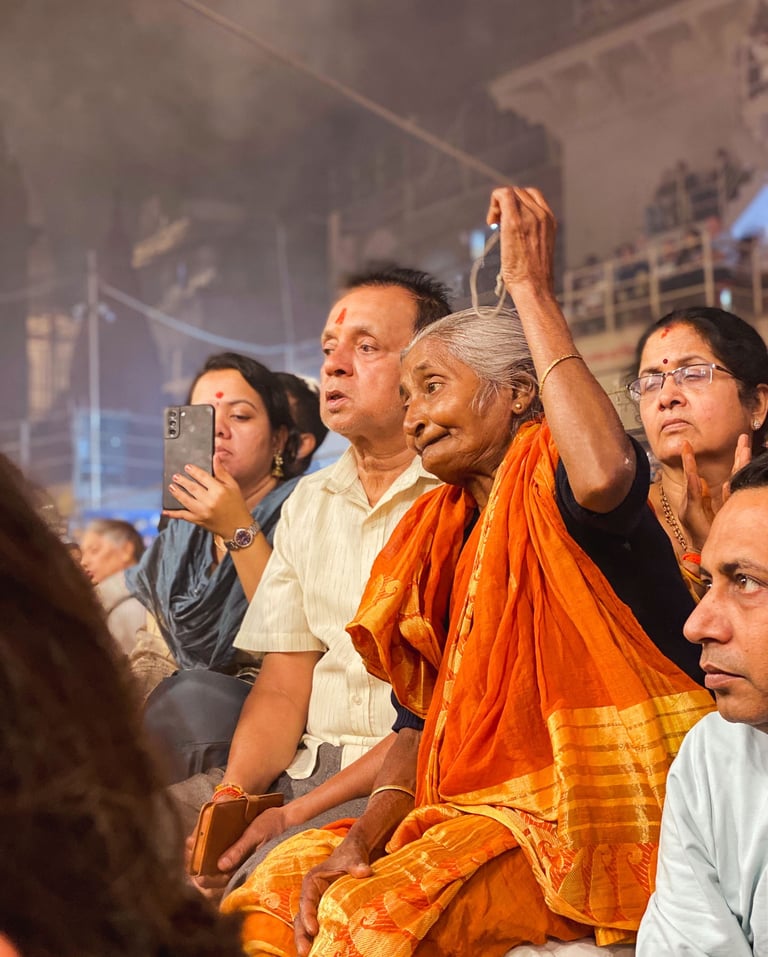

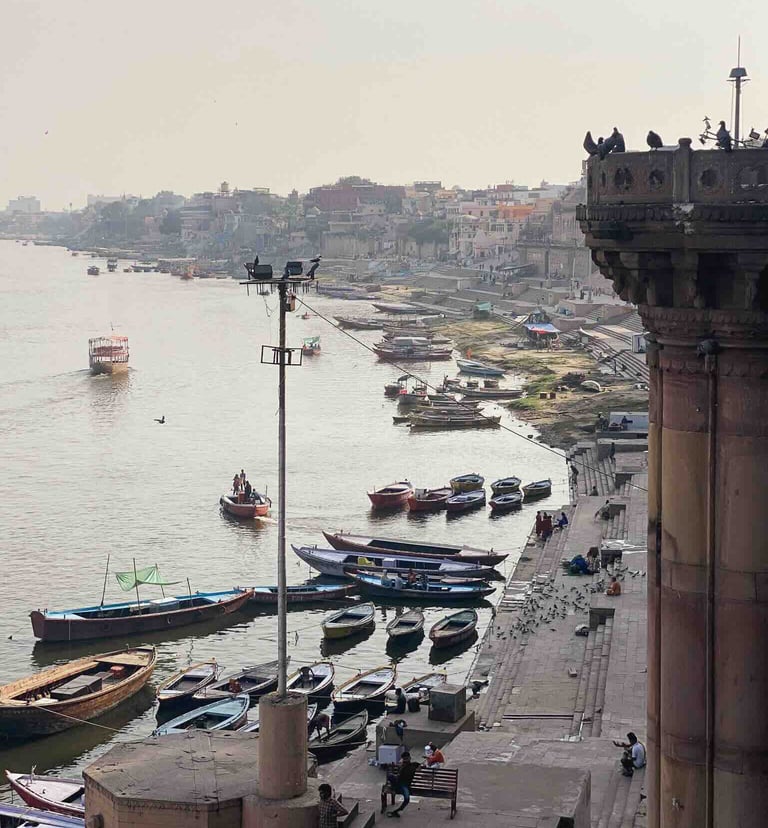

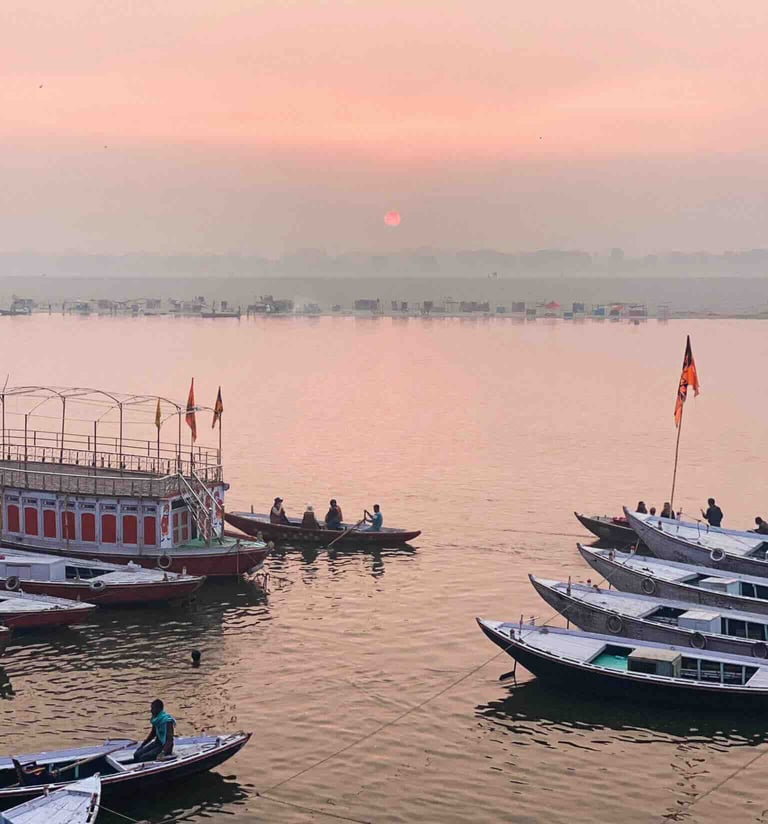

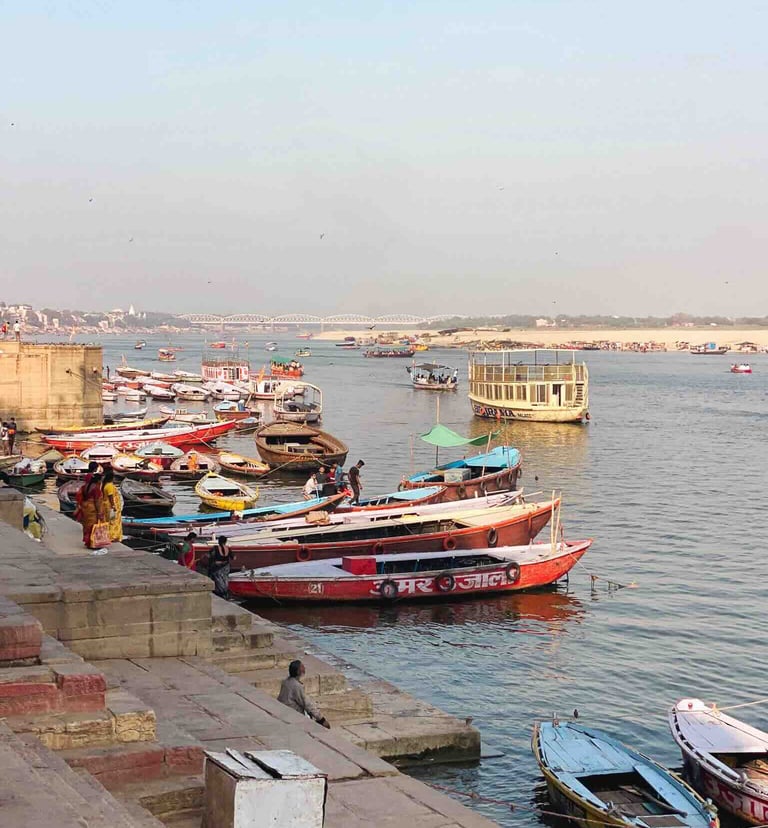

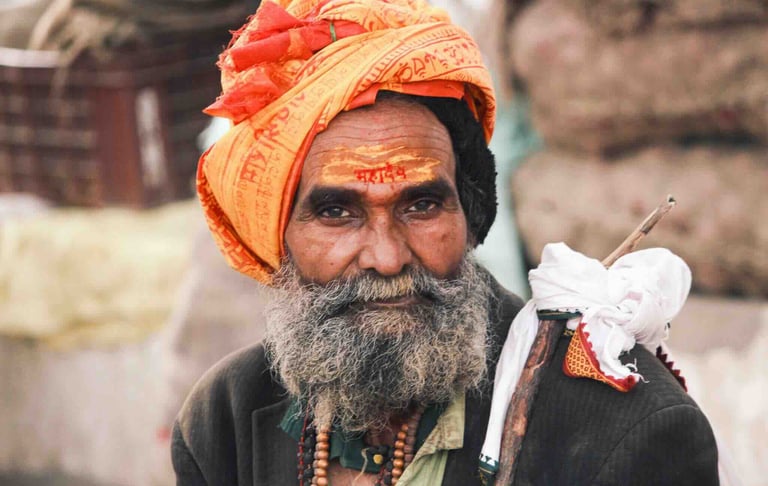

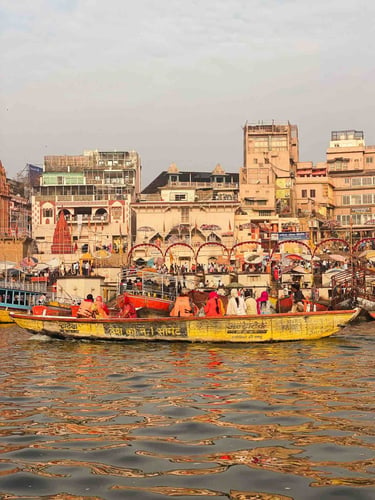
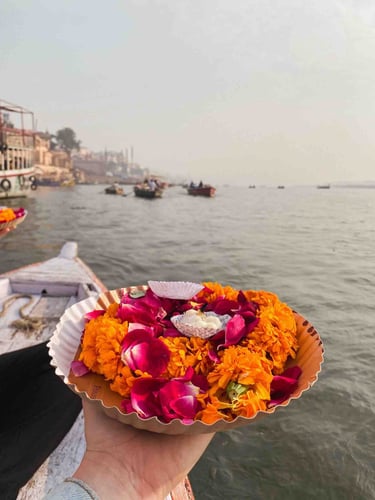
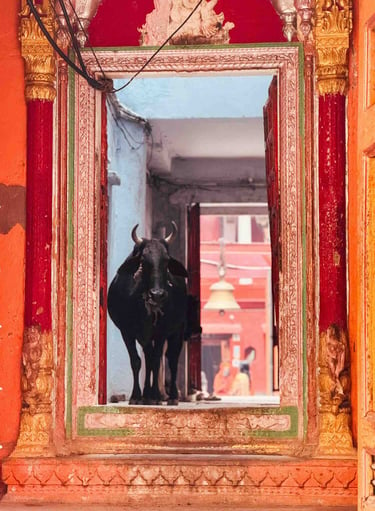
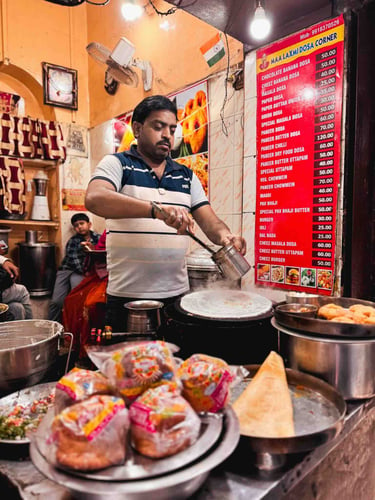




Discover Varanasi, also known as Benares, a sacred city revered by millions of Indians. Situated on the banks of the Ganges, this ancient city is the cradle of Hindu spirituality and tradition, offering visitors an authentic immersion into Indian culture.
"Agir pour Bénarès" : A Medical Center Serving the People of Varanasi
As we wandered through the streets of Varanasi with Manish, he introduced us to one of his French friends, Michel. A retiree who spends part of the year in India, Michel founded the medical center “Agir pour Bénarès” 19 years ago, providing free healthcare to the city's most underprivileged residents.
We had a long conversation with him, and his journey left a lasting impression on us. Before opening this clinic, he worked with a Swiss doctor in a unit caring for women who had suffered burns. He shared heartbreaking stories, particularly about young brides whose mothers-in-law set their saris on fire so that their sons could remarry. A shocking reality that, unfortunately, remains all too common in parts of India. Michel told us how emotionally taxing this work was. He recalled patients so severely burned that their skin would disintegrate at the slightest touch. In many cases, the only relief they could offer was morphine to ease their pain.
Meeting Michel was deeply moving. His dedication, kindness, and the respect he commands within the community truly touched us. This conversation was an eye-opening moment about the harsh realities of women’s conditions in India, an issue that is too often overlooked but deserves to be heard.
3 – Strolling Along the Ghats
Take a walk along the ghats of Varanasi to immerse yourself in the city's unique culture and atmosphere. Each ghat, with its steps descending into the sacred waters of the Ganges, offers a vibrant spectacle of daily and spiritual life. You will see devotees performing their morning rituals, sadhus meditating peacefully, and pilgrims purifying themselves in the holy waters. Meanwhile, numerous street vendors will offer you colorful souvenirs and flowers to present to the gods.
